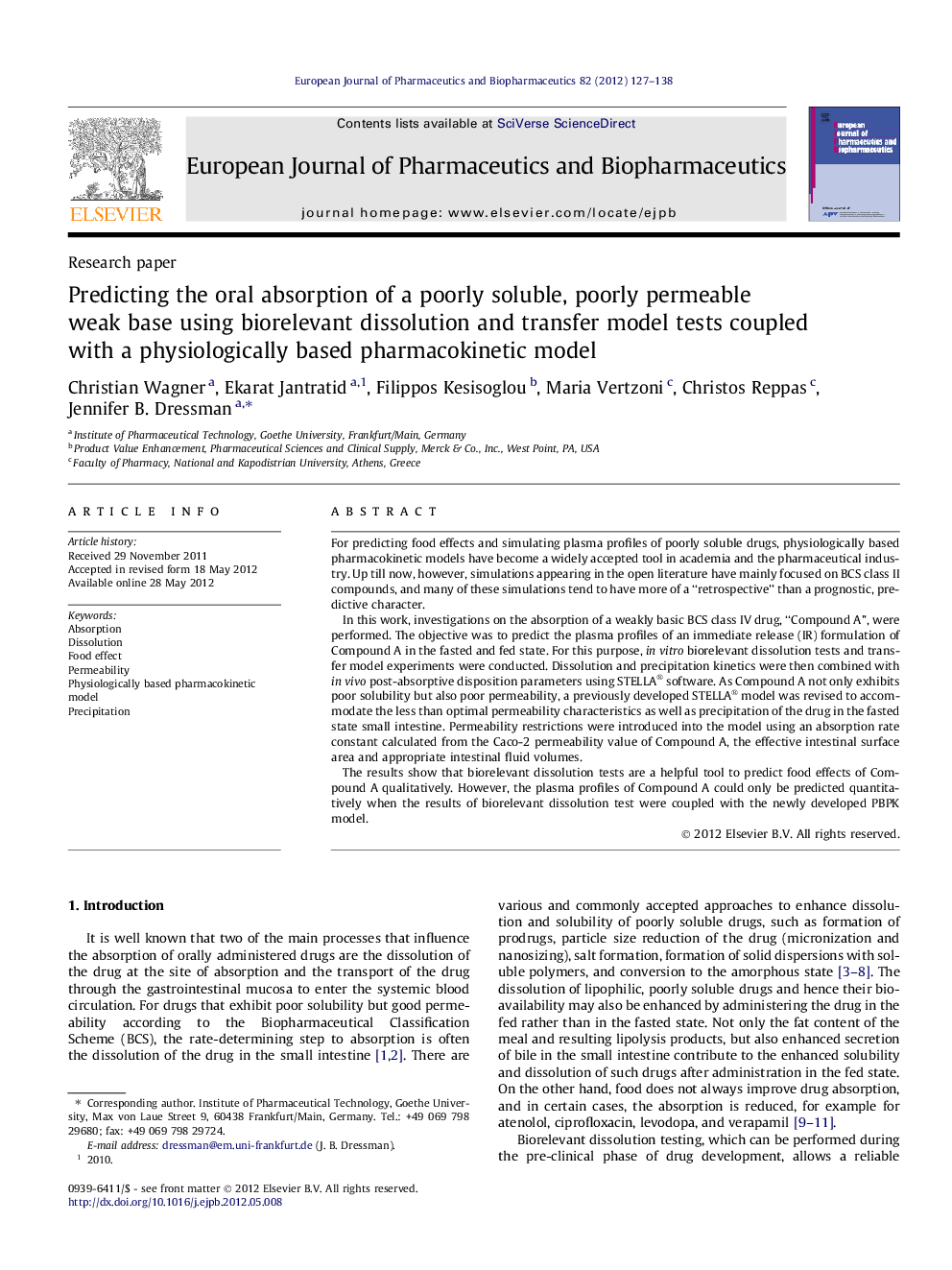| کد مقاله | کد نشریه | سال انتشار | مقاله انگلیسی | نسخه تمام متن |
|---|---|---|---|---|
| 2085302 | 1545358 | 2012 | 12 صفحه PDF | دانلود رایگان |

For predicting food effects and simulating plasma profiles of poorly soluble drugs, physiologically based pharmacokinetic models have become a widely accepted tool in academia and the pharmaceutical industry. Up till now, however, simulations appearing in the open literature have mainly focused on BCS class II compounds, and many of these simulations tend to have more of a “retrospective” than a prognostic, predictive character.In this work, investigations on the absorption of a weakly basic BCS class IV drug, “Compound A”, were performed. The objective was to predict the plasma profiles of an immediate release (IR) formulation of Compound A in the fasted and fed state. For this purpose, in vitro biorelevant dissolution tests and transfer model experiments were conducted. Dissolution and precipitation kinetics were then combined with in vivo post-absorptive disposition parameters using STELLA® software. As Compound A not only exhibits poor solubility but also poor permeability, a previously developed STELLA® model was revised to accommodate the less than optimal permeability characteristics as well as precipitation of the drug in the fasted state small intestine. Permeability restrictions were introduced into the model using an absorption rate constant calculated from the Caco-2 permeability value of Compound A, the effective intestinal surface area and appropriate intestinal fluid volumes.The results show that biorelevant dissolution tests are a helpful tool to predict food effects of Compound A qualitatively. However, the plasma profiles of Compound A could only be predicted quantitatively when the results of biorelevant dissolution test were coupled with the newly developed PBPK model.
Using in silico PBPK modeling coupled with in vitro biorelevant dissolution and transfer model experiments, the plasma profile of a poorly soluble, poorly permeable research compound could be quantitatively simulated in both the fasted and fed state. For this particular example, the precipitation of drug upon entry into small intestine was found to be the main limiting factor to the in vivo performance in the fasted state.Figure optionsDownload high-quality image (96 K)Download as PowerPoint slide
Journal: European Journal of Pharmaceutics and Biopharmaceutics - Volume 82, Issue 1, September 2012, Pages 127–138